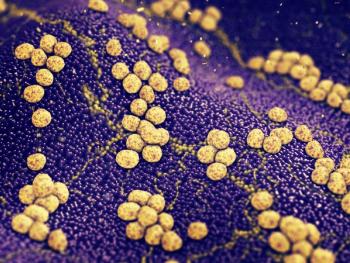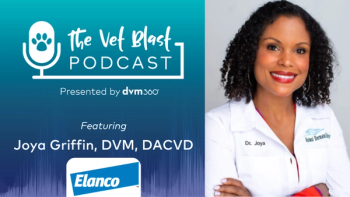
Diagnosis and treatment of food allergy in cats (Proceedings)
Previous recommendation of a 3 week elimination diet trial was empirical.
Prospective clinical evaluation of food allergic cats
- Previous recommendation of a 3 week elimination diet trial was empirical
- Initial recommendation in this study was to feed a home-cooked restricted diet for 60 days
- In several instances the results were equivocal after 60 days and the diet was fed an additional 30 days.
Data collected
- Time elapsed before maximal clinical response on diet
- Time elapsed before return of initial clinical signs when fed previous diet
- Age, breed, sex, clinical signs
- Responsiveness to glucocorticoids
- Concurrent disease conditions
- Final treatment diets
Diets Fed
- Formulated based on known past exposure
- Avoided any previously consumed foods
- Consisted of home cooked foods
- Protein sources - rabbit, venison, lamb, duck, goose, ostrich, emu
- Carbohydrate source - green peas, rarely rice or potatoes
Results - Time elapsed before maximal clinical response
- 1-3 weeks - 4 cats
- 4-6 weeks - 7 cats
- 7 weeks - 1 cat
- 9 weeks - 1 cat
- Recent date – diet trials x 12 weeks
Results - Time elapsed before return of initial clinical signs
- 15-30 minutes - 2 cats
- 24 hours - 2 cats
- 2-3 days - 4 cats
- 6-8 days - 4 cats
- 10 days - 1 cat
- Recent data – feed previous diet x 14 days
Age At Onset of Clinical Signs
- Range of 3 months to 11 years
- <1 year old - 3 cats (23%)
- 1-2 years old - 3 cats (23%)
- 4 years old - 2 cats (15%)
- 6-11 years old - 5 cats (39%)
- Compared to Atopic Dermatitis and Flea Allergy, this is older in general for the development of an allergic skin disease
- New Record = 12 years of age
Breeds Affected
- Siamese, Domestic Shorthair, Domestic Longhair
Clinical Signs
- Non-seasonal pruritus
- Most commonly affects the ear/pinnae, pre-aural region, neck, periorbital region and face
- Miliary type lesions most common (“Miliary dermatitis”)
- Eosinophilic plaques, Rodent ulcers
- Feline symmetrical alopecia
- Severe excoriations can occur
- Angioedema, urticaria, conjunctivitis
Response to Glucocorticoids
- Complete cessation of pruritus - 64% of cases
- Partial reduction in pruritus - 9% of cases
- No reduction in pruritus - 27% of cases
Graham-Mize CA, Rosser EJ, Hauptman J: Absorption, bioavailability and activity of prednisone and prednisolone in cats. Adv Vet Derm, vol. 5: 152-158.
- Greater than a 6-fold difference in Cmax of oral prednisolone (Cmax= 1400 ng/ml) vs. oral prednisone (Cmax= 220 ng/ml)
- Cmax of oral prednisolone after oral prednisone only 122 ng/ml
- Results indicate both a decreased gastrointestinal absorption of prednisone compared to prednisolone, and possible decreased conversion of prednisone (inactive form) to prednisolone (active form) by the liver in cats = 12 fold difference
Concurrent Primary Pruritic Skin Diseases
- Flea Allergy Dermatitis
- Atopic Dermatitis
- Flea Allergy and Atopic Dermatitis
- Flea Collar Hypersensitivity
Diagnosis
- Treat suspected food allergy cases symptomatically for first 6-12 months before recommending an elimination diet trial
Rationale For Initial Symptomatic Therapy For 6-12 Months
51 food allergic dogs followed for 3 years
- Only 3 dogs re-developed pruritus
- 2 dogs became flea allergic
- 1 dog became atopic
- None of the dogs became pruritic due to the new hypoallergenic treatment diet
- All dogs had been eating the initial sensitizing diet for 6-12 months or longer
Dogs Started On Elimination Diet Prior To 6-12 Months Of Pruritus
- 2 cases initially on beef/soy based diets
- Placed on lamb based diets after 3 months
- Pruritus controlled for 2 months
- Pruritus re-developed and dogs found to be reacting to lamb
Dogs Started On Elimination Diet Prior To 6 Months of Pruritus
- 1 case initially on lamb/rice based diet
- Placed on venison based diet after 2 months
- Pruritus controlled for 3 months
- Pruritus re-developed and dog found to be reacting to venison
Theory of an Immunologic Window
- Patient is genetically programmed to become sensitized to commonly exposed antigens in the diet after a certain age
- At this age, sensitization begins over a 6-12 month time period?
- After this time period of programming, the sensitizing immunologic window closes
Immunology of food allergy
IgE mediated food allergy:
- Common in children - peaks at 1 yr.
- Consider skin testing and in-vitro serum testing in kittens?
- Rare in adults
- False negative skin tests in adults
Delayed hypersensitivity reactions to foods:
- More common in adults
- Consider patch testing with foods
Elimination diet trial – minimum 8-12 weeks in duration
Protein hydrolysate formulated diets:
Reducing the Molecular Weight (Daltons) of a specific protein in the diet
- Purina Veterinary Diets - HA Formula - Hydrolyzed soy (10,000 Daltons), corn starch, canola/coconut oil – Experimental Trial Diet Only
- Hill's Prescription Diets
- Feline z/d Ultra (canned) - Hydrolyzed chicken liver (3,000 Daltons), corn starch, soybean oil
- Feline z/d Low Allergen(dry) - Hydrolyzed chicken liver, rice, soybean oil
- Feline Hypoallergenic Treats - Hydrolyzed chicken liver, rice, soybean oil
- Royal Canin Veterinary Diet (Waltham)
- Hypoallergenic HP23 Feline – Hydrolyzed soy (10,000 Daltons), rice, chicken fat, beet pulp, anchovy oil, soya oil
Home-cooked elimination diet trial
- Restricted diet fed for up to 90 days
- Formulate based on known past exposure
- Avoid any previously consumed foods
- “Nothing else is to pass the cat's lips for the next 60 days”
Discontinue all
- Table scrapes
- Cat treats
- Chewable heartworm preventative
- Chewable vitamin supplements
- Essential fatty acid diet supplements
Feline diets
Protein sources
- Rabbit, lamb, venison, duck
- Cook by boiling or broiling
Carbohydrate sources
- Green peas
- Often refuse rice or potatoes
- Most often feed protein source alone
Treatment diets - feline
- Rabbit and rice based canned diets (Nature's Recipe)
- Venison, duck, or rabbit and green pea based canned and dry diets (d/d canned, Hill's)
- Lamb and barley based canned diet (Eukanuba Response Formula LB for Cats)
- Lamb, venison, duck, or rabbit and green pea based canned and dry diets (Royal Canin/Waltham/Innovative Veterinary Diets)
Home cooked treatment diets
Protein source
- Lamb, venison, rabbit, chicken, turkey, beef, duck, goose, ostrich, emu
Carbohydrate source
- Green pea, rice, potato or sweet potatoes
Essential fatty acid dietary supplement
- Derm Caps, EFA-Caps
Dicalcium phosphate
- Non-flavored, additive free multiple vitamin and mineral supplement
- Taurine for cats
Balanced home-made elimination diet for cats
- ½ pound cooked potatoes, rice, or green peas
- 1 pound cooked lamb, venison, ostrich, emu, rabbit, or duck
- 1 teaspoon Dicalcium phosphate
- ½ tablespoon Safflower Oil (Hollywood Brand only)
- 2 teaspoons light salt
- 1½ tablets of Nature Made® Multi Max – Complete Multi Vitamin/Mineral Supplement with Iron
- 350 mg Taurine
Feeding guidelines:
- Broil, boil, or bake lamb and grind or finely chop.
- Add salt to cooking water for rice, potatoes, or green peas. Mix the safflower oil, Dicalcium phosphate, vitamin/mineral supplement, and taurine with the rice, potatoes, or green peas, and then add the mixture to the meat puree. Keep refrigerated and warm in microwave to increase palatability.
- Feed 2½ ounces/5 pounds of cat/day.
Foods associated with exacerbation of clinical signs
- Any food items being prepared in the kitchen - “The Counter Cat”
- Meats, cheeses, cooking oils, margarine, breads, odors from various cooked foods
- Peoples favorite snack foods
- Popcorn, pretzels, peanuts, cookies (Oreo), potato chips, corn chips, doughnuts, pizza, french fries
New dilemma
- Many patients with a possible food allergy that have already eaten and been exposed to “everything but the kitchen sink”
- Possible cross contamination of commercial diets during processing
- Prescription and non-prescription hypoallergenic diets
- Patients reacting to various ingredients used in the processing of commercial diets
Newsletter
From exam room tips to practice management insights, get trusted veterinary news delivered straight to your inbox—subscribe to dvm360.




